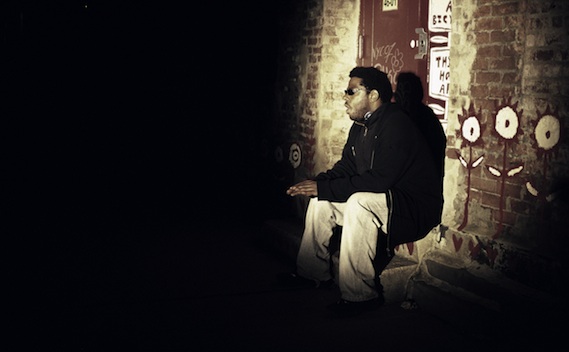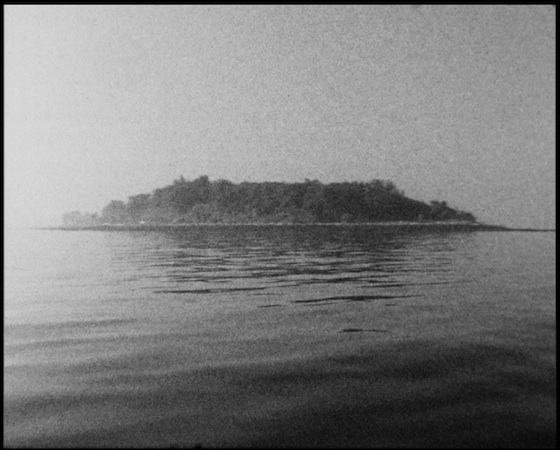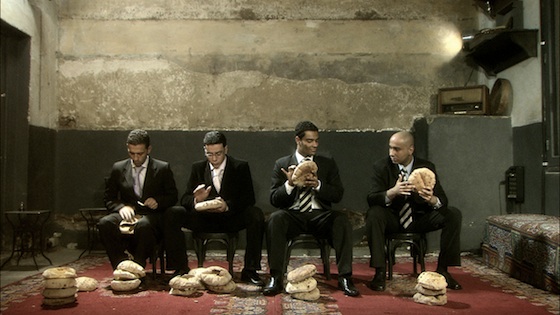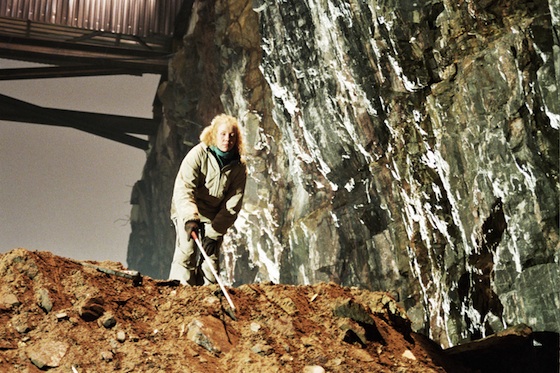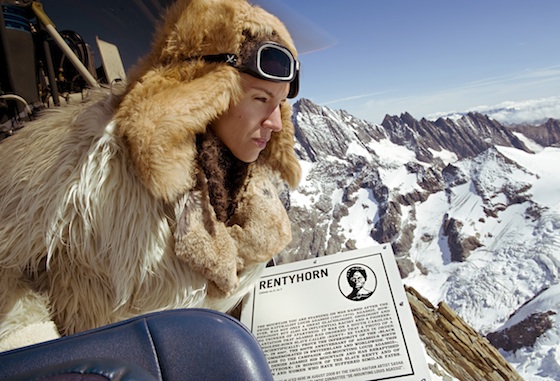17 Dec 2018
Events
Urbant Agents: Shanghai Screening
25 May – 30 July, T.B.F.M.2013, Shanghai, China
A screening – curated by Marita Muukkonen – of works by key Finnish experimental film and video artists from the mid-1990s to the present, will be on show at K11 Art Mall in conjunction with the T.B.F.M. 2013 exhibition in Shanghai, China. Most of the artists featured in this screening work with film, video, photography as well as with other media.
The screening opens on 24 May and will be on show throughout the exhibition.
The exhibition shows such pioneering media artists as Yang Fudong and Hu Jieming from China. The exhibition is curated by Li Zhenhua, who had a residency at HIAP Suomenlinna as a part of Urban Agents -programme in January 2013.
The screening is organised as a part of HIAP’s Urban Agents programme – a continuation of Urban Studies exchange programme – which aims to develop projects in China and Hong Kong in collaboration with Finnish artists.
Urban Agents programme is funded by the Finnish Ministry of Education and Culture.
THE SCREENING PROGRAMME
Planet Earth—Encyclopedia (1995, 6 min)
Directed by Seppo Renvall
Artist’s Dilemma (1997, 4 min)
Directed by Roi Vaara
Power (1999, 4 min)
Directed by Salla Tykkä
Flirt (2001, 5 min)
Directed by Liisa Lounila
A Monument for Invisible (2003, 12 min)
Directed by Anu Pennanen
Batbox/Beatbox (2007, 18 min)
Directed by Jani Ruscica
Bread of Life (2008, 6 min)
Directed by Adel Adidin
Optical Sound (2005, 6 min)
Directed by Mika Taanila
Rentyhorn (2008, 4 min)
Directed by Sasha Huber
Two Islands (2013, 6 min)
Directed by Jan Ijäs
SHORT FILMS/VIDEOS & ARTISTS
Seppo Renvall: Planet Earth – Encyclopedia
This work is based on pictures from a series of twelve books dating from 1912. The music is a film score from the same year: A Gruesome Tale, composed by J. S. Zcemecnik and performed by Aslak Christiansson. The film presents rapid-fire juxtapositions of pictures taken from the books, collating landscapes with indigenous people, towns and cornfields. It makes one aware of the pointlessness and violence of classifications. The work lays bare the hidden ideological structure of the encyclopedia, and also corroborates a chapter of humanity’s history.
Seppo Renvall (b. 1963) works in experimental film, video and photography. His films are characterized by repetition and rhythm, cyclic images and sounds, and their simultaneity creates a powerful, polyphonic presence. Renvall’s work also extends to happenings, performances and music.
Roi Vaara: Artist’s Dilemma
Artist’s Dilemma is a performance made to be filmed with a 16mm film camera in one take. The performance took place on the frozen sea about 50km east of Helsinki, in temperatures of minus 30 degrees Centigrade. The chilling beauty of the landscape is undercut by the absurd figure of the indecisive artist trying to decide which road to take – art to the left or life to the right.
One of Finland’s best known performance artists, Roi Vaara (b. 1953) embraces social, political and ecological themes. Vaara’s performances are usually made for a specific place and the audience in that place. Shared time is consequently an important element in them. Sometimes his ideas cannot be acted out in this way, however. In such cases he performs for ‘a single eye’, the camera, which is generally stationary, simply recording the event as in Artist’s Dilemma. Vaara does not manipulate the image with camera angles or editing – he reduces the event to one single take. The eye of a video is restricted compared to the human eye, and as such, the picture is clearly framed.
Salla Tykkä: Power
In Power by Salla Tykkä two people are boxing: a young woman without a shirt and a big man. The black and white image and the timeless space make the atmosphere dream-like; the hard action and sounds, however, refer to real life and pain. Power is a statement against the power relations in our society, but it can also be seen as a symbolic battle for life and survival.
In her early films and videos Salla Tykkä (b. 1973) tells short stories about the transition from childhood to adulthood and relations between the sexes which elude unambiguous interpretation in their enigmatic ambivalence and complexity. An atmospheric visual aesthetic, the skilled use of well-known film music, her play on allusions and memories generate lasting tension and a sense of foreboding and uncertainty.
Liisa Lounila: Flirt
Flirt stages ambiguous scenes of hostility in which people either fight or embrace each other in pairs. The combinations change so that one actor from the previous scene always remains in the next scene. The film is set in a pitch-black space and the action is suspended in time. The camera seems to circle around the protagonists, accompanied by an eerie soundtrack that produces a feeling of impending drama or joy. Flirt as many of Lounila´s video works, shares the time-slice camera technique, where 528 pictures are shot simultaneously using a home-made pinhole camera. Lounila’s use of temporal suspension and atmospheric sound is clearly intended to heighten the emotional charge, which brings it close to the language of television commercials and movie trailers. The bullet-time effect converts the films’ scenes into slices of a larger narrative. Once combined, these techniques give rise to expectations of a totality that nevertheless remain undefined.
The subjects chosen by Liisa Lounila (b. 1976) for her work include unexplained aviation accidents, crime scenes and plot twists from action films. Lounila uses a range of media in her works – text, painting, photography, video – as means of testing new ground.
Anu Pennanen: A Monument for the Invisible
A Monument for the Invisible is a film in which Pennanen investigates Helsinki’s urban environment from a blind person’s perspective. This way, she by-passes the usual emphasis on the visual coding of contemporary urban space, which is now framed in a more intuitive manner. The blind Johanna wanders around different parts of the cityscape—the high-tech business area, dominated by the emblematic glass-and-steel office towers, and a construction site where preparations for a large glass shopping mall are being done. Pennanen’s view of the city (subtly underlined by a stark, minimal electronic soundtrack) is distant and slightly inhuman, bare and shiny, but at the same time offering a seductive aesthetic experience. Long, slow pans and tilts caress the architecture’s geometric surfaces, and through aesthetic framing the artist emphasizes the effect of formal repetition and uniformity in today’s architecture. The relatively short film has a subtle narrative build-up, that shows the main character ultimately creating her own space in the emphatically three-dimensional environment.
Anu Pennanen’s (b. 1975) work has concentrated on urban public space and its relation to cinema and media. Collaborative and site-specific interaction with people allow her to involve her subjects as mirrors and investigators of the built environment in her films.
Jani Ruscica: Batbox/Beatbox
Batbox/Beatbox is a pair of experimental short films by Jani Ruscica which physically reveal the limitations of human vision. The two films juxtapose very dissimilar environments: nature depicted through bats’ nightly echolocation, and the urban metropolis of NYC, navigated by hip-hop artists. These are two radically different ways of using sound and movement as tools to navigate and identify one’s environment. Ruscica took the sounds of horseshoe-bats recorded for Batbox, and asked the beatbox artists shown in Beatbox to use them as a stepping stone for musical improvisation. In Batbox, the sound and movement are biological phenomena, in Beatbox they are cultural. The searchlight that shines through the woods through which the bats fly, reminds us of our own, human blindness in the dark; whereas the spotlight that highlights the suburban streets, basketball courts and subway tracks in Beatbox reveal the urban space as a stage. In the course of the film, the personal and local environment of the beatboxers becomes universal; the mundane becomes epic, reflecting the core of hip-hop culture.
Jani Ruscica (b.1978) is an artist working with film, video, photography and other media. Ruscica works collaboratively, his interest lies in how one defines one’s location, one’s placement in the world, and how this definition changes – continuously, if necessary – according to personal, cultural, representational or even scientific factors. Ruscica’s self reflexive works explore the intersection between cinema, video art, theatre and performance.
Adel Abidin: Bread of Life
In some cultures, bread is considered the source of life, therefore treated as a holy object; something to be respected and not joked about. As Abidin visited a restaurant in Cairo, he was served this bread that seemed more suitable for playing music with than to be eaten – it was so hard it made a pleasant sound, like an instrument. The artist gathered four percussion musicians who earn their living by playing music for belly dancers in nightclubs. He approached them with this ironic idea to play with bread – the source of life.
Adel Abidin’s (b. 1973) works usually employ few words, but his pictures are all the more powerful and eloquent for it. Abidin often brings an ironic attitude to bear on everyday prejudices and stereotypes, deconstructing the increasingly predominant ethos of either/or.
Mika Taanila: Optical Sound
Office technology becomes obsolete very quickly. Old tools transform into musical instruments. The film is based on the Symphony # 2 for 12 Dot Matrix Printers, composed by [The User]. Experimental short film Optical sound continued the series of films by Mika Taanila which deal with technology, humanity, and futuristic ideas.
In his practice, Mika Taanila (b. 1966) works fluently in the fields of documentary film, music video and the visual arts. His documentary films, for example, address the alarming issues related to human engineering and artificial urban surroundings. Nevertheless, visually, Taanila’s films are outside the documentary mainstream canon.
Sasha Huber: Rentyhorn
As a member of the Transatlantic Committee “De-mounting Louis Agassiz” Sasha Huber carried a metal plaque bearing a graphic representation of the slave Renty to the top of an Alpine peak, the Agassizhorn (3946 metres), on the borders of the Swiss cantons of Berne and Valais. In so doing, she took the first step towards renaming the mountain. This act commemorates the fact that the Swiss-born naturalist and glaciologist Louis Agassiz (1807-1873) was an influential racist and pioneering thinker of apartheid, and that the Agassizhorn should be renamed the “Rentyhorn” in honour of the Congolese-born slave Renty, and of those who met similar fates. Agassiz ordered Renty to be photographed on a South Carolina plantation, “to prove the inferiority of the black race”. After carrying out this artistic act, the Transatlantic Committee “De-Mounting Louis Agassiz” and she submitted a request for the plaque to be permanently fixed to the rocks on the summit, and for the mountain to be renamed. The has carried out this work in close collaboration with Hans Fässler, historian, author and founder of the Transatlantic Committee “De-mounting Louis Agassiz”. More about “De-Mounting Louis Agassiz” at: www.louverture.ch.
Sasha Huber (b. 1975) uses various media including video, photography, drawing, intervention and stapling. Being of European and Haitian heritage, she allies herself with the Caribbean Diaspora. The starting point for her work is an examination of her roots and of how this affects the process of constructing her personal and artistic identity. The journey began as a reaction against the historical injustice of colonialism. But, as her work progressed, this was gradually transformed into a quest for understanding and a more interactive dialogue.
www.sashahuber.com
Jan Ijäs: Two Islands
The film is about two enormous rubbish dumps in New York’s Staten Island and Hart Island. The former was once the world’s largest rubbish dump but is now closed. The latter is a cemetery for unknowns and still in use. “Two Islands” bluntly asks, what does the existence of the two huge mountains of economic and social waste and rejected surplus tell us about our civilization and about the “richest nation in the world”, and what kind of legacy will the future archaeologists find in them?
Filmmaker and media-artist Jan Ijäs (b. 1975) is a artist of lens-based art, both still and moving. The films of Ijäs tend to break the traditional boundaries of fictive and documentary films. Ijäs’s work is often displayed as gallery installations rather than in traditional movie venues incorporated with still images and text works. Ijäs’s, sometimes even humorous works, deal with serious and difficult social themes, like migration into foreign and hostile societies.
![]()

